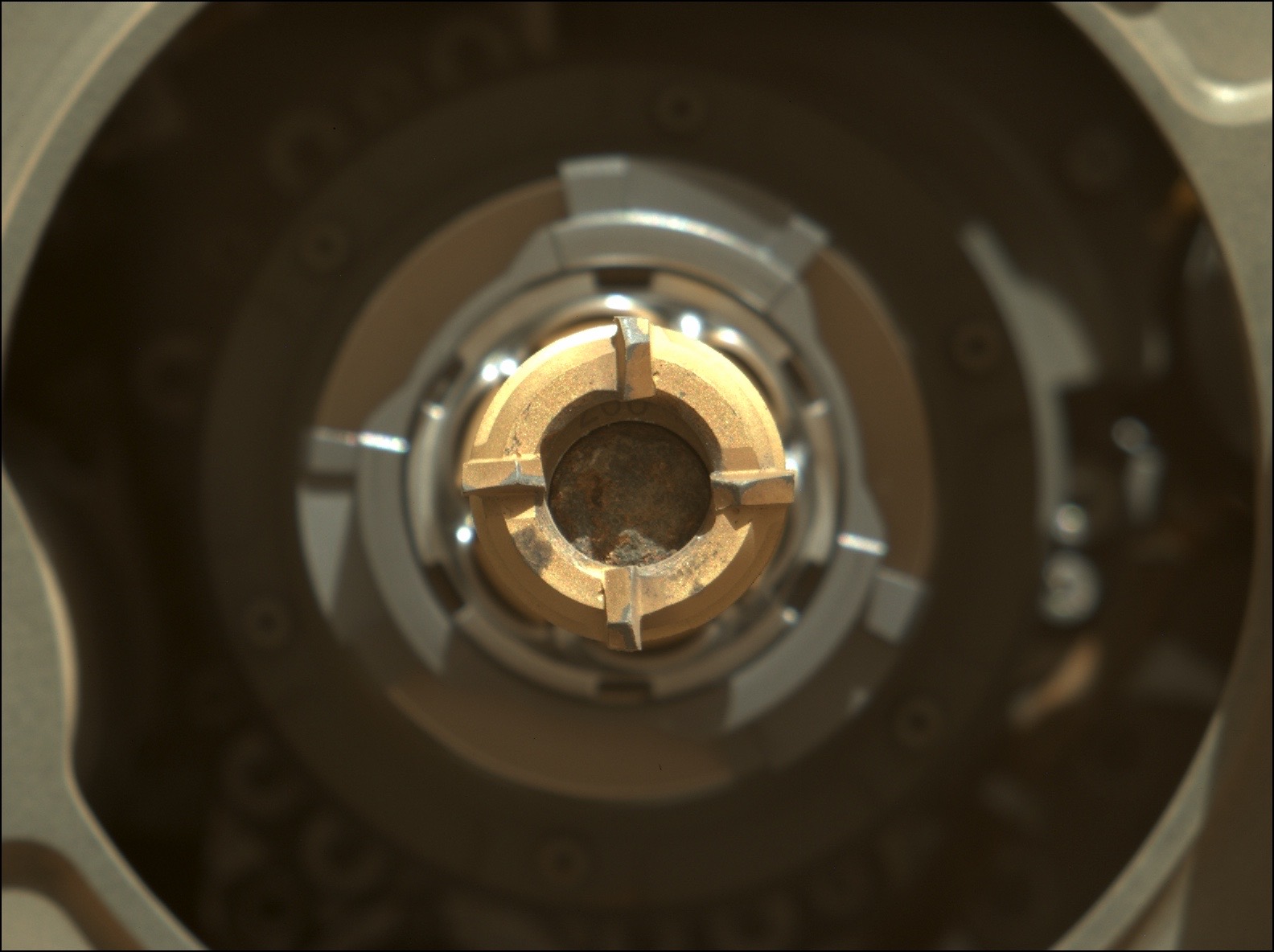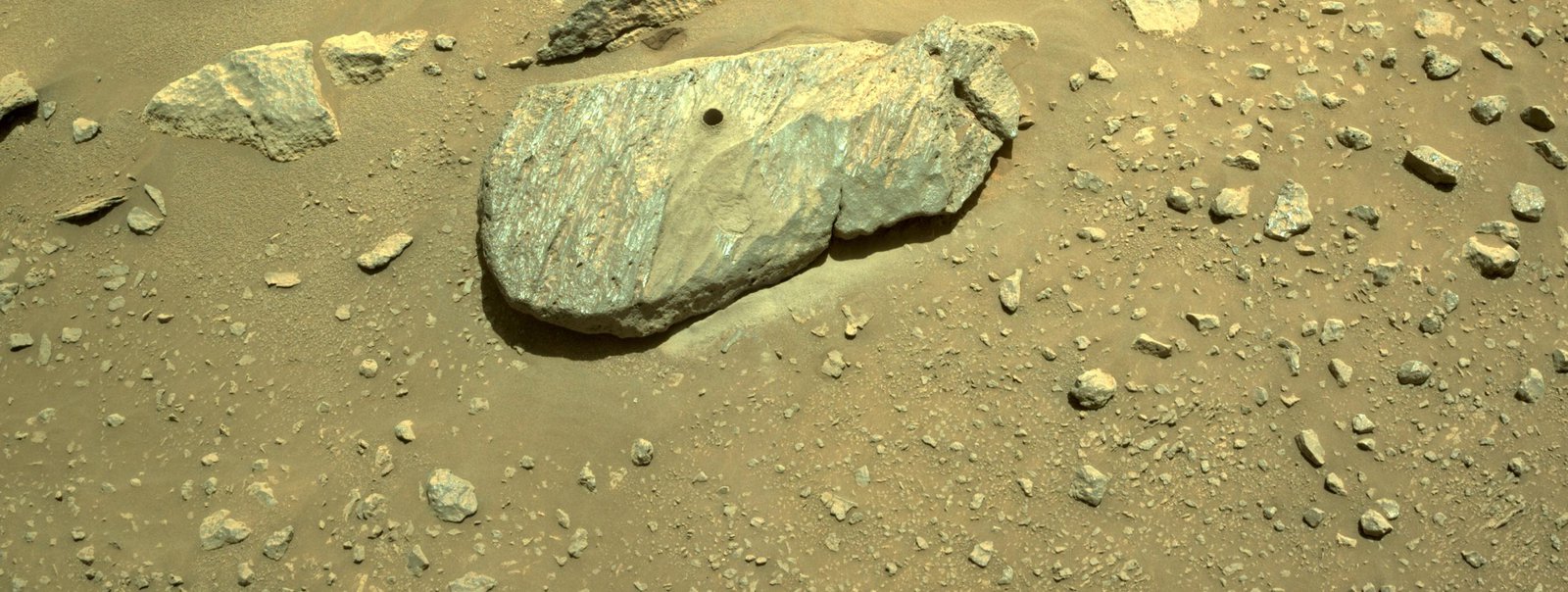
The second time seems to have been the charm for NASA's Perseverance Mars rover.
The car-sized robot has likely snagged its first-ever Red Planet sample, apparently socking away a drilled-out core of a rock dubbed "Rochette," mission team members announced Thursday (Sept. 2). They stressed, however, that a bit more data is needed before the sampling run can be conclusively declared a success.
It was the second such effort for Perseverance, which also made a sampling attempt on Aug. 5. But the rock it drilled that day turned out to be surprisingly soft, crumbling into bits that didn't make it into the designated tube.
Related: Where to find the latest Mars photos from NASA's Perseverance rover
Perseverance landed on Feb. 18 inside Mars' 28-mile-wide Jezero Crater, which hosted a big lake and a river delta billions of years ago. The rover has two main tasks: hunt for signs of past Mars life on Jezero's floor, and collect and cache dozens of samples.
Those samples will be brought to Earth by a joint NASA-European Space Agency campaign, perhaps as early as 2031. They will be the first pristine pieces of another planet that humanity has ever hauled home — and the first of those samples seems now to be in Perseverance's grasp.
After the failed Aug. 5 attempt, Perseverance drove 1,493 feet (455 meters) to a new locale, a ridge dubbed "Citadelle" (French for "castle"). Citadelle's spine features rocks that appear to have resisted wind erosion, suggesting that they're hard enough to hold up under drilling, NASA officials have said.
Get the Space.com Newsletter
Breaking space news, the latest updates on rocket launches, skywatching events and more!
The rover team soon picked the briefcase-sized Rochette out among the ridgetop rocks and began an in-depth assessment of the drilling target. For example, Perseverance abraded away the top 0.4 inches (1 centimeter) of Rochette last week, allowing researchers to get a look at its subsurface.
Rochette passed all of the required tests, so Perseverance bored into the rock with the percussive drill at the end of its 7-foot-long (2.1 m) robotic arm on Wednesday (Sept. 1). Images beamed home by Perseverance shortly thereafter showed an intact sample core resting in the tube, as desired.
However, additional photos taken later "were inconclusive due to poor sunlight conditions," officials at NASA's Jet Propulsion Laboratory (JPL) in Southern California, which manages Perseverance's mission, wrote in an update Thursday. "Another round of images with better lighting will be taken before the sample processing continues."
That second set of photos was taken after Perseverance had performed an activity called "percuss to ingest," which vibrates the drill bit and sample tube to clear material away from the tube's lip. This shaking could have caused the sample to slide farther down into the tube, which would explain why it wasn't seen in the subsequent images, JPL officials said.
The better-lit photos will be taken Friday (Sept. 3) and beamed home to Earth early Saturday (Sept. 4). If those images confirm that the tube does still contain an intact sample, it will be sealed and stored, JPL officials added.
Mission team members are confident that this will indeed happen.
"The project got its first cored rock under its belt, and that’s a phenomenal accomplishment," Perseverance project manager Jennifer Trosper of JPL said in Thursday's update. "The team determined a location, and selected and cored a viable and scientifically valuable rock. We did what we came to do. We will work through this small hiccup with the lighting conditions in the images and remain encouraged that there is sample in this tube."

Perseverance will get a lot of sample-snagging practice over the coming weeks and months. The six-wheeled robot carries 43 sampling tubes, and team members have said they aim to fill at least 20 of them before the mission is done. Each sample will be a cylindrical core that's 0.5 inches wide by 2.4 inches long (1.3 by 6 centimeters).
It took a little while for Perseverance to start digging into its core science work on Jezero's floor, because the rover was busy helping out a friend. This spring, Perseverance supported and documented the first five flights of NASA's Mars helicopter Ingenuity, a technology demonstrator designed to show that aerial exploration is possible on the Red Planet.
Ingenuity is now returning the favor for Perseverance. The little chopper is flying relatively independent reconnaissance sorties for the rover, on an extended mission showcasing the scouting potential of Mars helicopters.
Mike Wall is the author of "Out There" (Grand Central Publishing, 2018; illustrated by Karl Tate), a book about the search for alien life. Follow him on Twitter @michaeldwall. Follow us on Twitter @Spacedotcom or Facebook.
Join our Space Forums to keep talking space on the latest missions, night sky and more! And if you have a news tip, correction or comment, let us know at: community@space.com.

Michael Wall is a Senior Space Writer with Space.com and joined the team in 2010. He primarily covers exoplanets, spaceflight and military space, but has been known to dabble in the space art beat. His book about the search for alien life, "Out There," was published on Nov. 13, 2018. Before becoming a science writer, Michael worked as a herpetologist and wildlife biologist. He has a Ph.D. in evolutionary biology from the University of Sydney, Australia, a bachelor's degree from the University of Arizona, and a graduate certificate in science writing from the University of California, Santa Cruz. To find out what his latest project is, you can follow Michael on Twitter.









